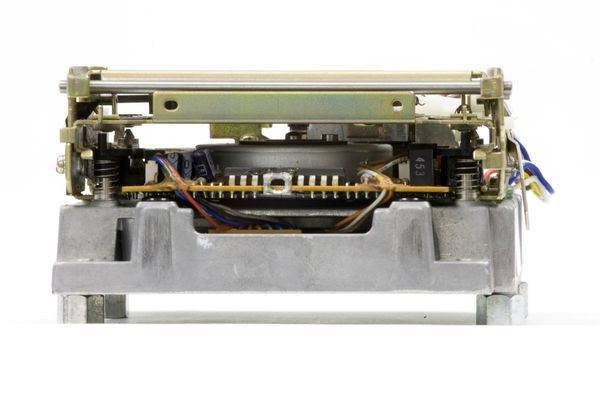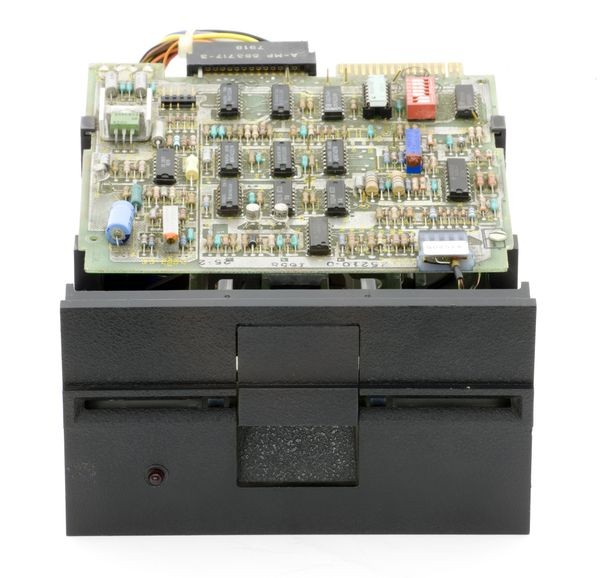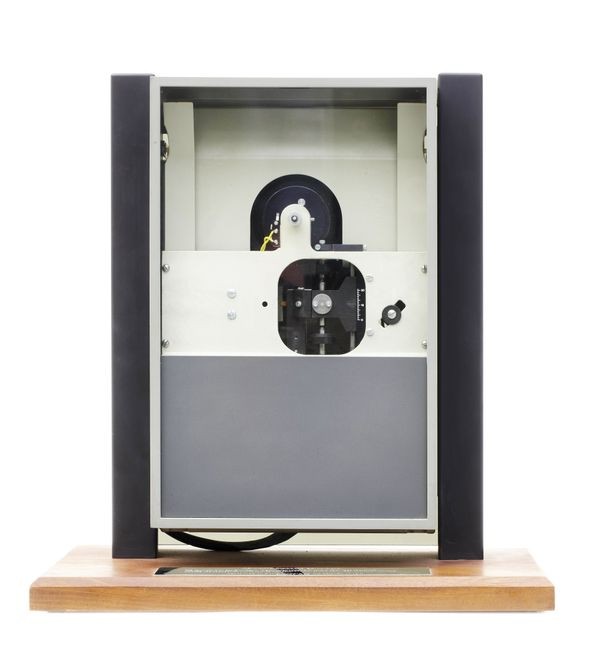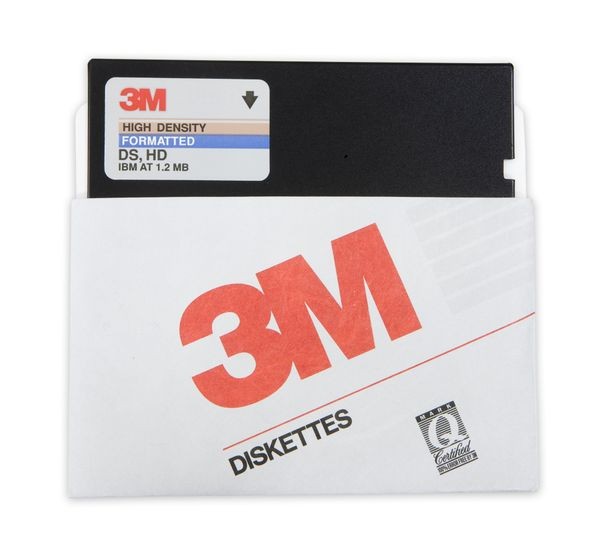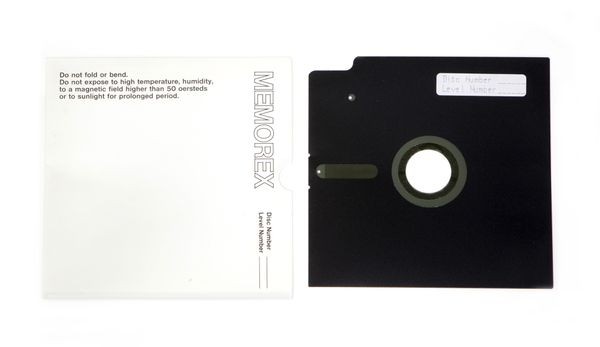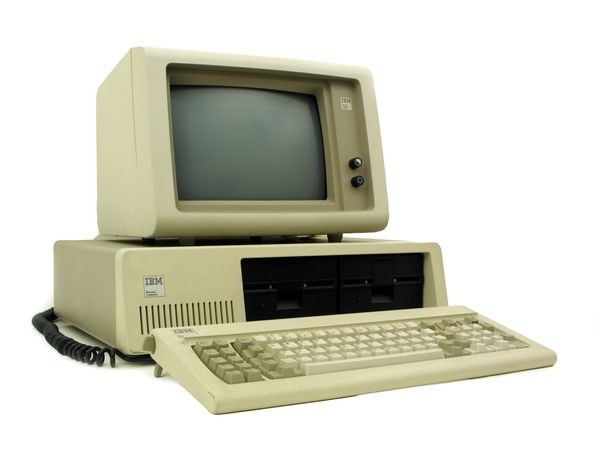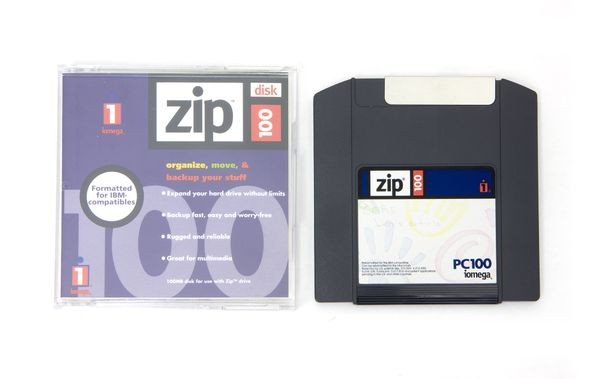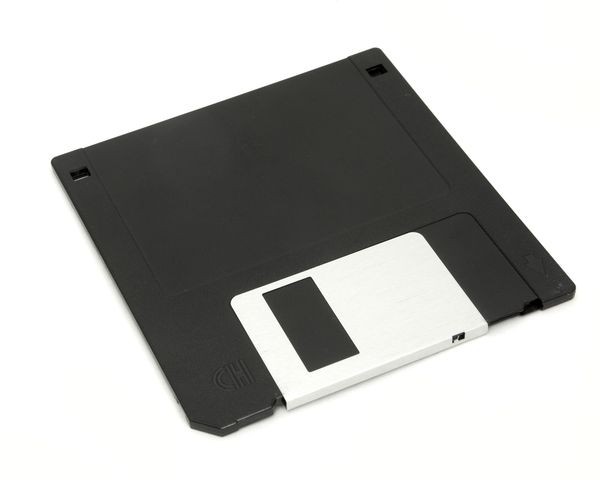Floppy Disks
3.5-inch inch floppy disk drive
The 3.5-inch format was the last mass-produced floppy disk format, replacing 5.25-inch floppies by the mid-1990s. It was more durable than previous floppy formats since the packaging was rigid plastic with a sliding metal shutter. It was eventually made obsolete by CDs and flash drives.
Storage on the cheap: Floppy Disks
Magnetic hard disks transformed data storage, but were initially large and expensive. That was fine for mainframes, but personal computers needed something else. And the alternative already existed: the floppy disk.
In the 1970s and 1980s, floppy disks were the primary storage device for word processors and personal computers, and became the standard way to distribute software.
SA-400 5.25-inch floppy disk drive
Word processing manufacturers like Wang were anxious for disks smaller than 8 inches. Because the drive could fit inside a PC case, it revolutionized personal data storage.
View Artifact Detail23FD “Minnow” flexible disk drive (prototype)
The Minnow was a read-only drive that loaded factory-written microcode into mainframe computers. It was the predecessor of a family of low-cost "floppy" drives which become indispensible for word processors and PCs.
View Artifact DetailThe Floppy Disk: from Mainframe to PC
How to preserve the data when the power goes off? That was the conundrum confronting IBM engineers.
The System/370 was IBM’s first computer using read/write semiconductor memory for its microcode. But without power, its microcode disappeared and had to be reloaded. The solution, delivered in 1971, was an 8” diameter flexible Mylar disk holding 80KB.
Al Shugart left IBM to make floppy disk drives for small computers. Competition soon stimulated smaller sizes and higher capacities, and floppy disks played a critical role in the rapid growth of PCs.
5.25-inch floppy disk
The 5.25-inch floppy disk, a scaled-down version of IBM’s 8-inch disk, held about 100KB. But having the same soft jacket, they were no more robust.
View Artifact Detail8-inch floppy disk
The first floppy was developed in IBM’s San Jose facility, home of the original hard disk. It stored about 80KB. A key invention was the soft wipe inside the disk’s jacket to reduce wear.
View Artifact DetailZip 100 drive
Like hard disks but unlike other floppies, ZIP drives used a non-contact read/write head that “flew” above the surface. Reliability problems and low-cost CDs eventually made ZIP disks obsolete.
View Artifact DetailIBM PC with floppy disk drive
Although the IBM PC could be used with an audiocassette recorder instead of a floppy disk drive, few were sold without a floppy.
View Artifact DetailZip disk
Various companies made proprietary higher-capacity disks with packages similar to – but incompatible with – the 3.25-inch standard. Iomega’s 100 MB ZIP disk was halfway between a floppy disk and a hard disk.
View Artifact Detail3.5-inch floppy disk
The 3.5-inch floppy disk format was the last mass-produced format, replacing 5.25-inch floppies by the mid-1990s. It was more durable than previous floppy formats since the packaging was rigid plastic with a sliding metal shutter. It was eventually made obsolete by CDs and flash drives.
View Artifact Detail